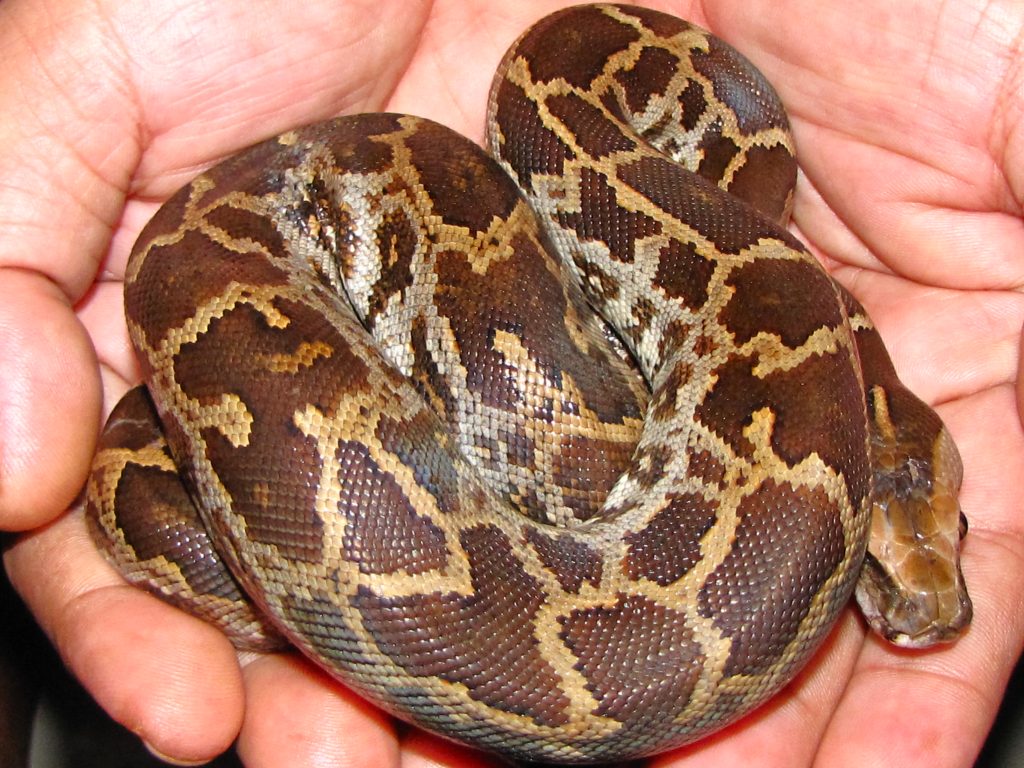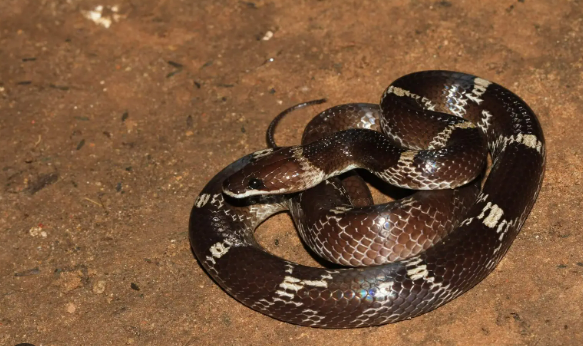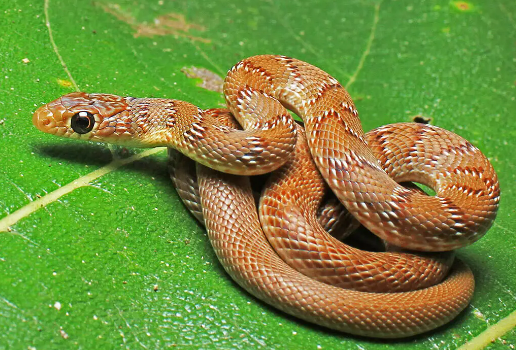People usually think that snakes and non-poisonous materials are oxymorons and cannot be used together. In the minds of people, snakes cannot be non-poisonous. However, that is not the case. Although snakes are life-threatening and dangerous, not all of them are a threat to humanity. India has a total of 270 species of snakes, of which only 60 are venomous. This means that the rest are totally benign.
Let us check out some of the most common non-poisonous snakes found in India!
Dhaman Snake (Ptyas mucosa)
The Dhaman Snake, or Indian Rat Snake, is also popularly called the Oriental Rat Snake. This snake has the ability to thrive in almost all kinds of environments, but their preference is urban areas. They also prey on rats, as they are the most readily available.
Checkered Keelback
This snake is found near rivers or freshwater lakes and is 1.75 meter in height. Their surface is blackish and patched with greenish, yellow round or brown color. Although they are not particularly poisonous, they can be a bit aggressive if they feel they are in danger.
Common Cat Snake
The common cat snake is probably the most easily recognizable Indian snake because of its triangular head structure. This is, in fact, broader than its neck. This snake is largely nocturnal and is most active between early nights and early mornings. Indian gamma snake is its other name.
Indian Rock Python

The Indian Rock Python is popularly known as Ajgar in India. It can be found in swamps and grasslands, as well as some rocky places too. The Eastern Himalayas are their natural habitat, as are the mangrove forests of the majestic Sundarbans.
Common Wolf Snake

The Common Wolf Snake is a species of the well-known colubrid snakes. These are most commonly seen in the Andaman Islands. They feed on rodents, skinks, and geckos. Moreover, their preference is to hide under heavy objects or in narrow cracks.
Common Sand Boa
The Common Sand Boa in Hindi is known as a “do-muha” snake. This is because its tail looks like its head. We can find these snakes in gardens, agricultural lands, brick piles, rat holes, and rock piles. They are also not venomous and usually eat small mammals, rodents, geckos, and birds.
Banded Racer

This snake’s natural habitat is foliage, bushes, and tall grass. This snake also comes from the colubrid species, and as compared to all the other non-venomous species of snakes, they are particularly small in size.
Banded Kukri Snake

Banded Kukri again belongs to the grand family of colubrid. The Himalayan area of India usually sees these snakes in abundance. That said, the Banded Kukri Snake can also be found in places like Bangladesh, Sri Lanka, Nepal, and Bhutan. They usually eat reptile eggs, larvae, insects and rodents.
Common Trinket Snake
The common trinket snake is most commonly found in Vishakhapatnam. If they sense a threat approaching them, they can become rather aggressive, which is why it is essential to be careful of them. Their size is medium, and you can also find them at places with higher altitudes of Pakistan, Nepal, Sri Lanka, and Bangladesh.
Black Headed Royal Snake
Finally, the Black-Headed Royal Snake is another non-venomous snake found in India. They are mainly found in the semi-deserts and deserts of India. These snakes are nocturnal species, which is why they are most active at night and also hunt during that time.
Facts about Non-venomous (non-poisonous ) snakes
- Non-venomous snakes help control pests like rats and mice. They even eat poisonous snakes, which reduces the risk of people encountering these dangerous reptiles. In many places, harmless snakes are considered beneficial for the environment.
- Venomous snakes, though not generally positive, have a unique use. Their venom affects blood pressure and clotting. Scientists can study this venom to create new medicines for various health issues, including cancer, pain, high blood pressure, heart attacks, and strokes.
- Non-venomous snakes don’t have universal features that set them apart from venomous ones. People need to learn to recognize dangerous snake species in their area or where they plan to visit.
- Non-venomous snakes have teeth, just like venomous ones. Watch out for infections, even if a non-venomous snake bites you. Large non-venomous snakes (like pythons and boas) can cause serious lacerations requiring urgent medical attention.
- How they hunt:
- Non-venomous snakes constrict their prey.
- They coil around the prey and squeeze.
- The pressure prevents the prey from inhaling, leading to rapid death.
- Defenses:
- All snakes have teeth for defensive bites.
- Most rely on camouflage to avoid being seen.
- Some coil up, rattle their tails, or produce warning sounds.
- Almost all will flee if given a chance.
What is the difference between poisonous and venomous?
- Poisonous:
- You ingest the toxin (which is less common) through your mouth, inhalation, or absorption.
- Example: Licking or eating a poison dart frog (please don’t do it!).
- Poison enters the body through inhalation, swallowing, or skin absorption.
- Venomous:
- The toxin is injected into you. When the snake bites you, venom enters your body and mixes with blood.
- Examples: Cobra fangs injecting venom or a scorpion’s stinger.
- Venom enters the body through bites or stings.
Final Words
Therefore, as can be seen, contrary to popular belief, there are ample types of non-poisonous snakes in India that are totally non-threatening.










Hey! my name is Tanu Bhan and I am a student as well as a budding writer. I would be very delighted to write some articles or reports for your website.
And I was not able to contact you through the “Contact Us” page that’s why left a comment.
Waiting for your reply..
Regards,
Tanu Bhan
Thanks, will enable contact us page